This post may contain affiliate links. Please see our disclosure policy.
Herbal jellies are delightful summertime jellies made with fresh herbs and flowers, and they can be either savory or sweet. Take any edible herb or flower and turn them into a tasty spreadable jelly in no time.
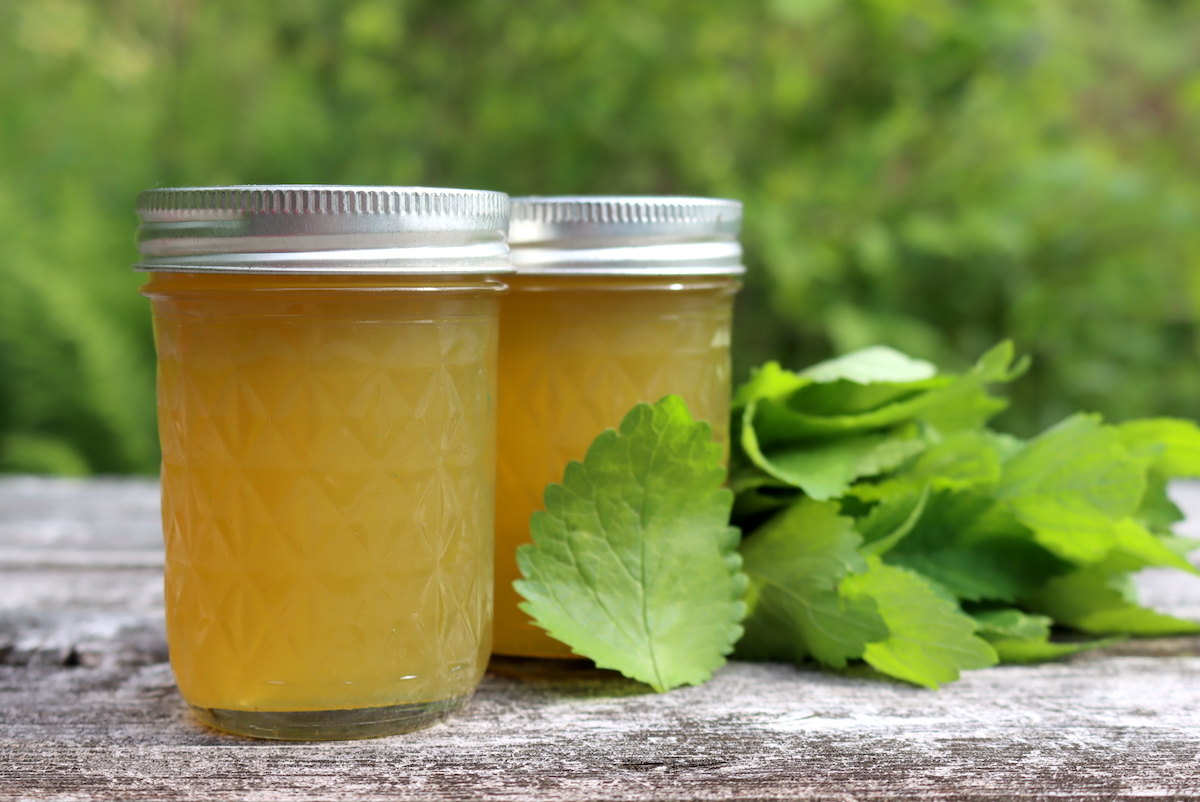
My daughter is particularly enamored with flower jellies, and these sweet spreads capture the essence of edible flowers in a jar for year-round enjoyment. This past year we made more than a dozen different varieties, and each was as unique as the flowers that flavored it.
This spring chive blossoms caught her eye, and she asked if we could make jelly with these little beauties. They’re beautiful, but she hadn’t tasted them. If she had, I’m sure she never would have suggested making jelly from this spicy garlic-flavored blossom.
It got me thinking though…why not make herbal jellies? Could they be made savory, to compliment crackers, roast meats or a charcuterie board?
Most people have heard of mint jelly, and it’s traditionally served with lamb and other savory dishes (even though it’s a sweet spread).
Clearly, herbal jellies can go either way, both savory and sweet.
A bit of research and a lot of recipe testing later, and I’m happy to share two distinct herbal jelly recipes with you. Both are incredibly easy to make, one savory and one sweet.
You can make them with just about any edible herb or flower, or a mix for a more complex, nuanced flavor.
Thyme and rosemary make a delightful savory jelly, as does basil. Herbs like mint and lemon balm are fabulous as sweet jelly.
Many more can go either way, made either savory or sweet, depending on your tastes (and how you intend to serve them).
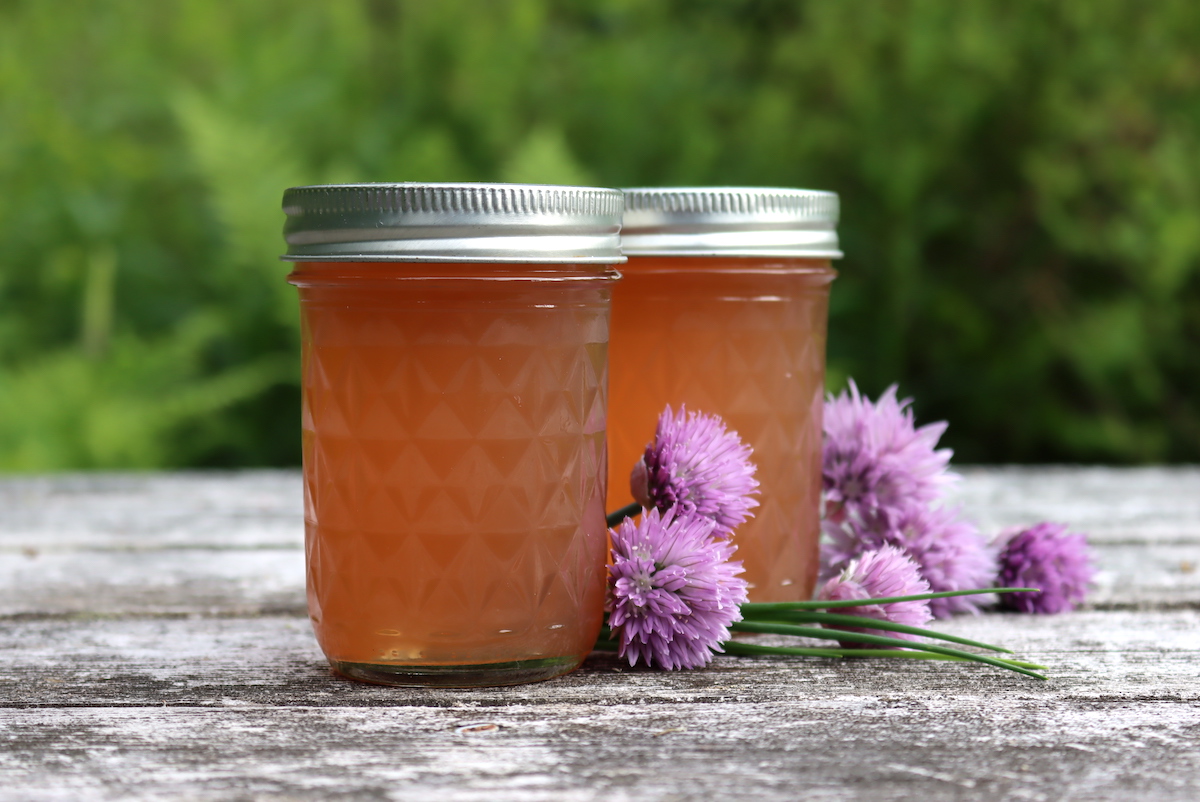
Basic Sweet Herbal Jelly
Sweet herbal jellies can be made with herb or flower tea in the same manner as any jelly. You start by making a tea with the herbs, and then strain the solids and use the herbal tea in place of fruit juice in the jelly recipe.
For a basic sweet herbal jelly, you need:
- 2 cups fresh herbs, or 1 cup dried herbs
- 4 cups water (or 2 cups water & 2 cups white wine)
- 2 Tbsp lemon juice
- 2 to 4 cups sugar (see note)
- 1 box (1.75 ounces) Low Sugar Pectin (Sure-Jell)
Start by making herbal tea using fresh or dried herbs. Bring the water to a boil, pour it over the herbs and allow it to steep for about 15 minutes.
You can use part water and part white wine for a “herb and wine jelly,” which works nicely with most herbs.
Two tablespoons of lemon juice help balance out the sweetness in the jelly and gives added acidity which helps the jelly keep (and ensures it’s safe for canning).
If you’re making a refrigerator jelly, you’ll still want to use the lemon juice as without it the herb jelly will be incredibly uni-dimensional. Fruits have natural acidity to balance their sugars, herbs do not.
I suggest somewhere between 2 and 4 cups of sugar, and that’s a wide range. A standard jelly recipe usually uses equal parts sugar and liquid by volume, so that’d be 4 cups herbal tea and 4 cups sugar. You’ll need that much if you’re using regular boxed pectin.
Personally, I’d suggest using low sugar pectin like sure jel low sugar, and reducing the sugar content to 2 to 3 cups. You’ll taste the herbs better that way, and trust me, it’s still plenty sweet.
To make the jelly, place the strained herbal tea into a saucepan with the powdered pectin and lemon juice (but don’t add the sugar yet). Bring it to a hard boil on the stove, and stir for one minute to ensure the pectin is fully dissolved.
Next, add the sugar and return the mixture to a hard boil. Stir to dissolve the sugar and then remove from the heat.
Ladle the finished jelly into prepared jars, leaving 1/4 inch headspace.
For refrigerator jelly, just cap the jars and allow them to cool on the counter before storing them in the refrigerator. They’ll keep several weeks that way, or up to 6 months in the freezer.
To can herbal jelly, process the jars in a water bath canner for 10 minutes. Once properly canned and sealed, the jars will keep right on the pantry shelf at room temperature for 12-18 months. Refrigerate after opening.
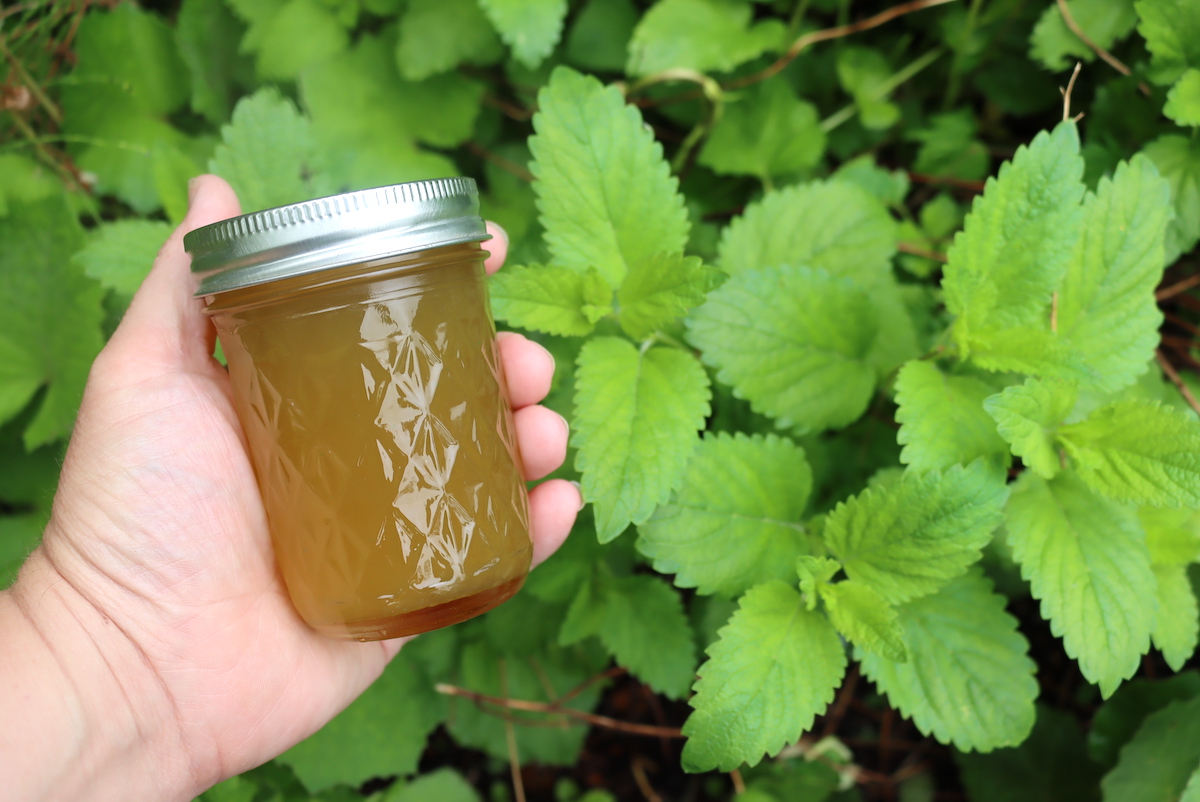
Basic Savory Herbal Jelly
Savory herbal jellies still have sugar, but less of it, and they also have vinegar to balance out the flavor. They’re tangy and warming, with the unique flavor of the herbs you’ve chosen.
Savory herb jellies tend to work well with more abrasive herbs, and they’re used in small amounts to add intense flavor to tiny bites from a charcuterie board. They’re also incorporated into glazes for meats and/or served with meat at the table as a condiment.
To make a savory herb jelly, you’ll need:
- 2 cups fresh herbs, or 1 cup dried herbs
- 4 cups water (or 2 cups water and 2 cups white wine)
- 1 to 2 cups sugar (see notes)
- 1 cup vinegar (wine vinegar, white, cider, or rice)
- 1/4 cup lemon juice
- 1 box (1.75 ounces) Low Sugar Pectin (Sure-Jell)
The herbs you choose here can be anything that’s edible, so long as it’s not too strongly flavored to be palatable in a herb jelly. I’d suggest around 2 cups of fresh herbs, chopped into a batch. Dried herbs are more concentrated, so go with about 1 cup.
For the liquid, you need some amount of water to extract the flavor from the herbs in the form of tea. The whole batch needs 4 cups of liquid, but you can use just 2 cups of water to make the herbal tea and put in another 2 cups of white wine instead. (Or just use 4 cups of water, your choice.)
For the sugar, the total amount is up to you. You’ll need some to ensure that the jelly has a balanced flavor, and I’d suggest using at least 1 cup given you’ll be adding quite a bit of vinegar for tangy acidity. You can use up to 2 cups and still call it a “savory” jelly, but beyond that, it starts to turn quite sweet.
The vinegar is essential to creating a rounded “savory” flavor that ensures the sugar doesn’t overpower. You can use any type of vinegar here, depending on your tastes. White vinegar gives a neutral flavor, but I think rice vinegar, white wine vinegar, or cider vinegar contribute more to the finished jelly. The vinegar is also what makes the jelly safe for canning by lowering the pH.
Lemon juice is technically optional, but it tends to add good flavor to most herbal jellies.
Finally, you’ll need pectin to get the jelly to set. To make a savory herbal jelly, you’ll need to use low sugar pectin because “regular” pectin requires astronomical amounts of sugar to activate.
I’d suggest using Sure Jel low sugar, as it’s incredibly dependable and has never failed me. It also has a great texture in the finished jelly.
Pomona’s pectin is another option, but I don’t think it sets as nicely, it’s more like jello than jelly. If you choose to use Pomona’s, it works differently than other pectins and has two parts. Follow their instructions for “mint jelly” when choosing the amount of pectin to use.

Ideas for Herb Jelly
Really you can use just about any edible herb or flower to make herb jelly, but some obviously taste better than others. Be careful when working with particularly pungent herbs, and either reduce the quantity of those or blend them with milder herbs.
Some of the best herbs for sweet herbal jellies include:
- Lavender Jelly
- Mint Jelly
- Lemon Balm Jelly
- Tulsi (Holy Basil) Jelly
- Ginger Jelly
- Borage Jelly
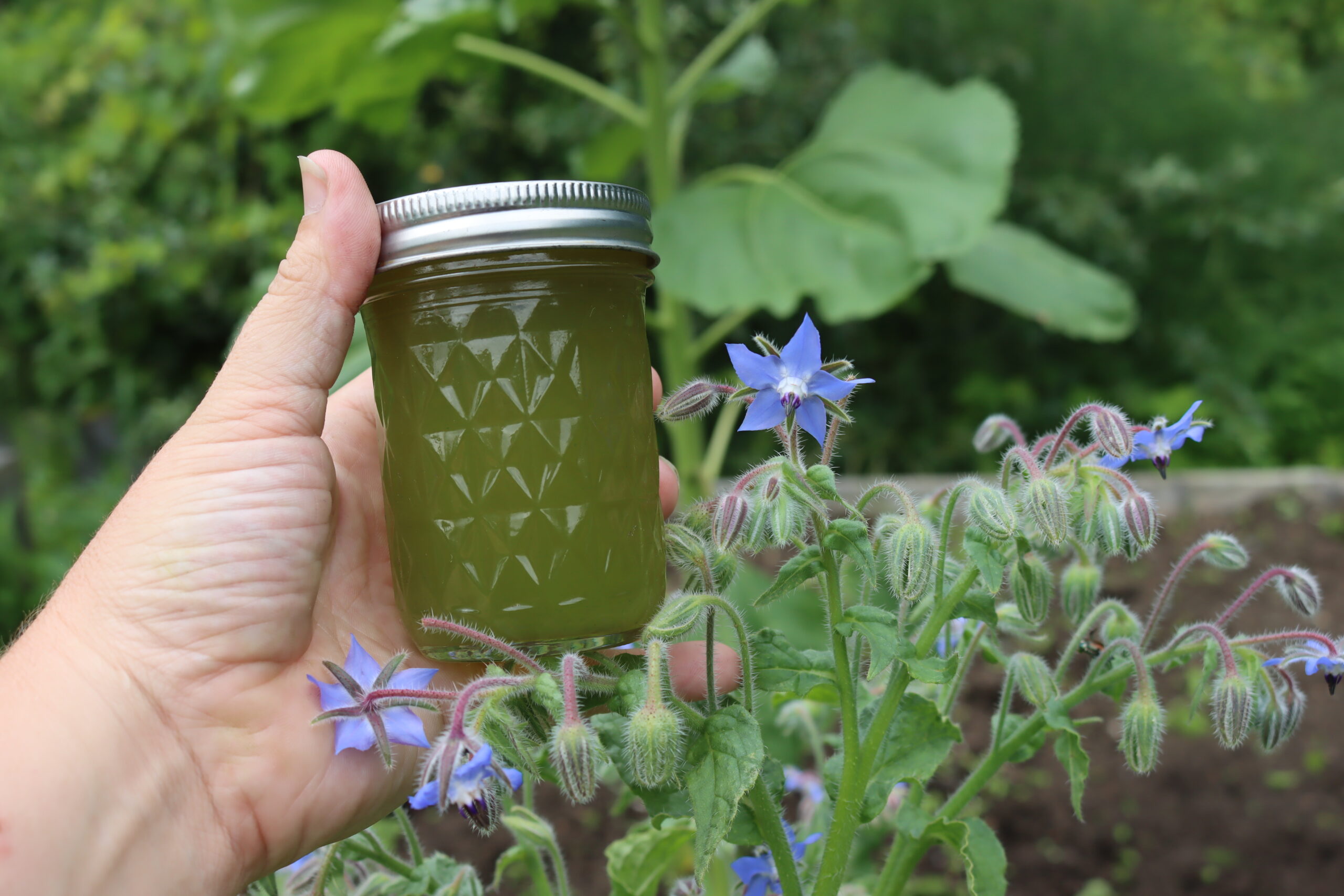
For savory herbal jellies, try:
- Chive or Chive Blossom Jelly
- Thyme
- Rosemary
- Basil
- Turmeric
- Horseradish (in small quantities)
If you choose to use medicinal herbs for jelly, be sure you know their medicinal actions and dosages. Many medicinal herbs are perfectly safe in jelly quantities, but some are better reserved for more measured intake.
Medicinal flowers are a particularly good choice for both savory and sweet jellies. Try any of these:
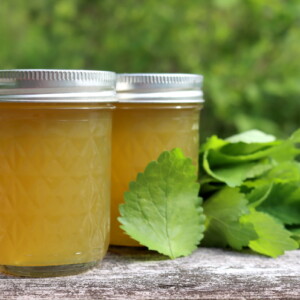
Herb Jelly (Savory or Sweet)
Ingredients
Sweet Herbal Jelly
- 2 cups fresh herbs, or 1 cup dried herbs
- 4 cups water, or 2 cups water & 2 cups white wine
- 2 Tbsp lemon juice
- 2 to 4 cups sugar, see note
- 1 Box Low Sugar Pectin, 1.75 ounces (such as Sure-Jell)
Savory Herbal Jelly
- 2 cups fresh herbs, or 1 cup dried herbs
- 4 cups water, or 2 cups water and 2 cups white wine
- 1 to 2 cup sugar, see notes
- 1 cup vinegar, wine vinegar, white, cider, or rice
- 1/4 cup lemon juice
- 1 box Low Sugar Pectin, 1.75 ounces (such as Sure-Jell)
Instructions
- Choose your recipe above, for either a sweet or savory herb jelly.
- Make a herbal tea using 4 cups water and 2 cups fresh herbs (or 1 cup dried herbs). You can also substitute 2 cups of white wine in for 2 cups of water. Bring the liquid to a boil, then remove from heat and pour over the herbs. Allow the mixture to strain for 10-15 minutes and then strain through cheesecloth or a fine-mesh strainer.
- Return the herbal tea to a clean saucepan and add in the other ingredients (except sugar). For the sweet jelly, that'd be lemon juice and pectin. For the savory, add in lemon juice, vinegar, and pectin.
- Bring the mixture to a boil, stirring to dissolve the pectin. Boil 1 minute.
- Add in the sugar, stirring to dissolve. Return the mixture to a boil and boil 1 additional minute.
- Remove the jelly from the heat and ladle into prepared jars leaving 1/4 inch headspace.
- For refrigerator jelly, just cap the jars and allow them to cool on the counter before storing them in the refrigerator. They'll keep several weeks that way, or up to 6 months in the freezer.
- To can herbal jelly, process the jars in a water bath canner for 10 minutes. Once properly canned and sealed, the jars will keep right on the pantry shelf at room temperature for 12-18 months. Refrigerate after opening.
Notes
Nutrition
Nutrition information is automatically calculated, so should only be used as an approximation.
Jelly Recipes
Looking for more tasty jellies to stock your pantry this season?
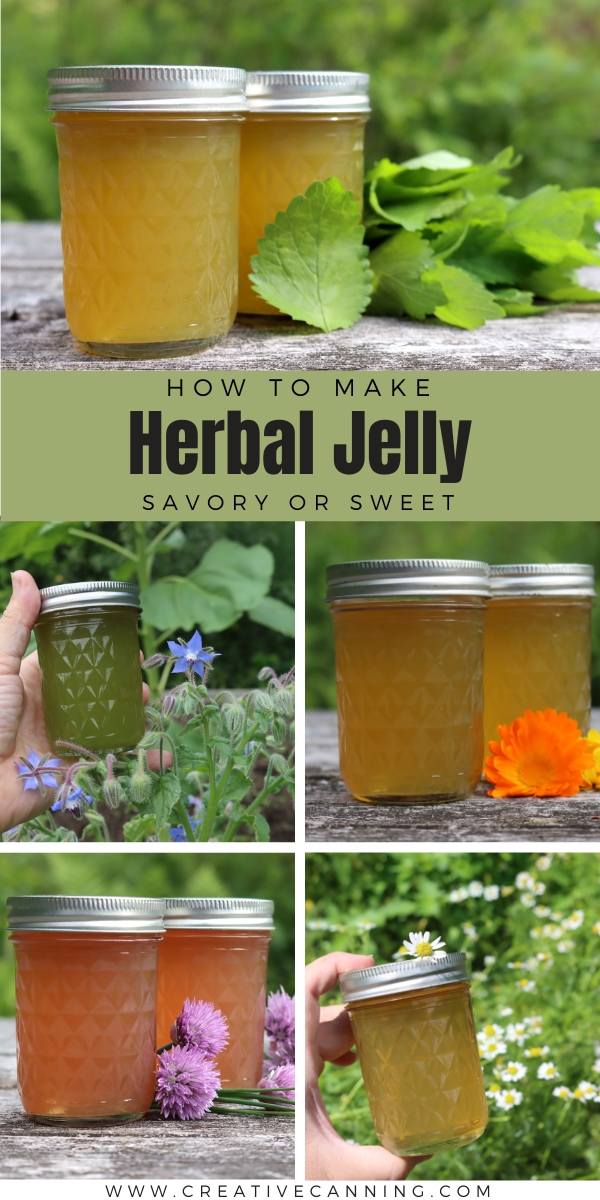
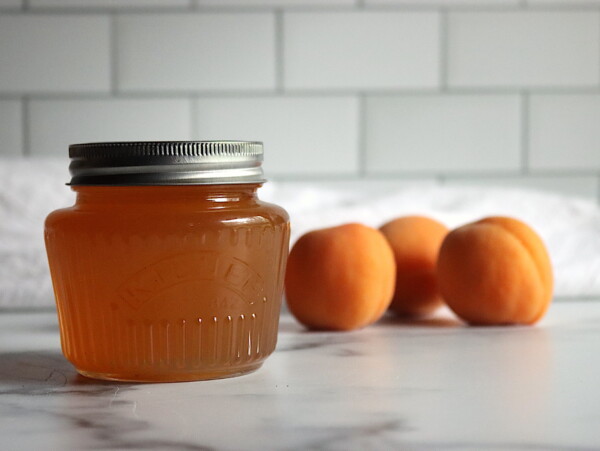
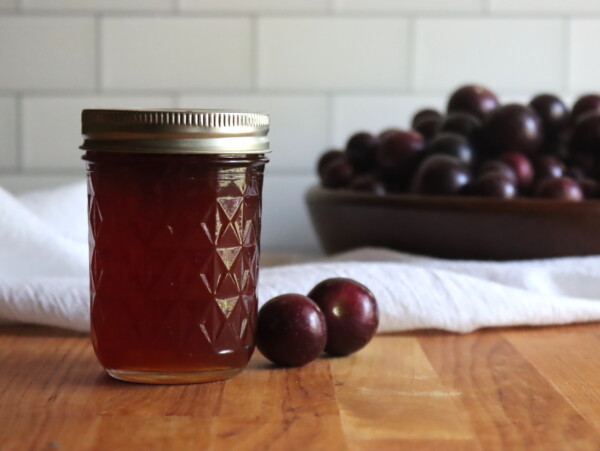
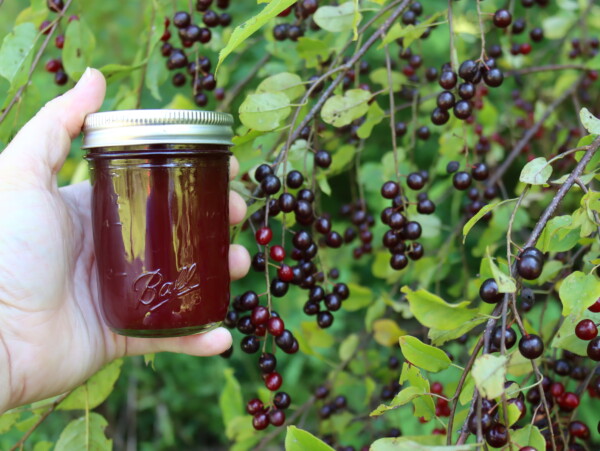
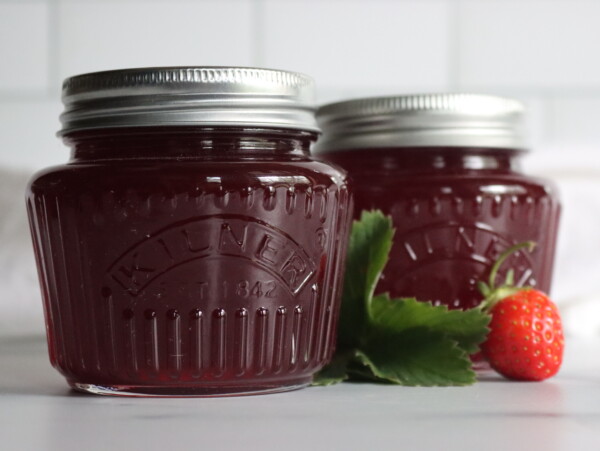
Fabulous and versatile recipe! I used apple cider vinegar and replaced half the water with apple juice to make an apple basil jelly. It turned out great.
That sounds so darn good!
I’m going to try a savory jelly! Thanks for the ideas 🧡
Have you ever tried adding some petals/leaves in the jelly? Would be so lovely but I have no idea how it would work out
Adding leaves and petals to the jelly can potentially be a canning safety issue, depending on the recipe you use. It may not have enough acidity to preserve the leaves in the jelly for canning. Beyond that, leaves/petals in jellies tend to float and just create a mat/raft at the top of the jelly instead of being neatly distributed through the preserve. If you want to add them and have them neatly distribute (and be a safe preserve), you’d have to make a refrigerator preserve, pour it into the jars and then tilt the jars every 5-10 minutes as it cooled to redistribute them. Once cool, store it in the refrigerator and use with a few weeks.
That said though, I have tried that method with some edible flowers (chives, dandelions, etc) and I found that the petals themselves had already lost all their flavor to the jelly. They were just bits of fiber in the jelly without adding anything flavor wise, and I thought they actually detracted from the preserve.
Wow, thank you for sharing this wealth of experience 🙏🧡